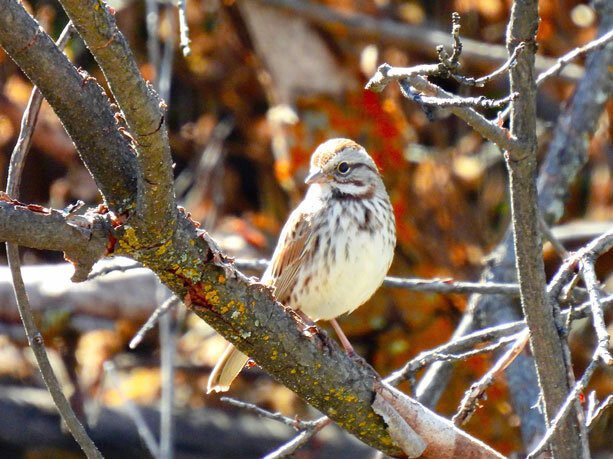
Photo courtesy Charles Martinez
This week’s Bird of the Week, compliments of the Weminuche Audubon Society and Audubon Rockies, is the song sparrow.
The song of this bird is described as three short notes followed by a trill, a rather simplified description of this sparrow’s talent. Juvenile males learn to sing by listening to nearby adult males and then using this pattern to compose their own unique versions. It may take a male 30 minutes to sing all of the different songs in his repertoire. When he starts over, he’ll perform the same songs but vary the order.
In late winter, male song sparrows perch in the open and sing to defend a territory and attract a mate. Studies have shown that with song sparrows, both the uniqueness and variability of song are what most attracts females. Males don’t need to display a lot of flashy plumage or intricate moves, but a good voice is essential.
Although we most often find this bird living in thickets near water, its range can include a variety of open brushy habitats. It is a year-round resident across much of the United States, but some migrate to Canada to breed. Across their range, song sparrows exhibit regional variations in appearance from large and dark to small and pale. Here they are distinguished by having a brown crown with a gray central stripe, gray eyebrow and cheek, and a streaked chest with a dark breast spot. They fly in short and direct hops between shrubs while pumping their long tails downward.
Song sparrows commonly show up in suburban and urban areas where artificial light may cause them to sing all night. An increasing awareness of the threats posed to birds by artificial light is one of the reasons to keep nighttime skies dark.
For information on events, visit www.weminucheaudubon.org and www.facebook.com/weminucheaudubon/.